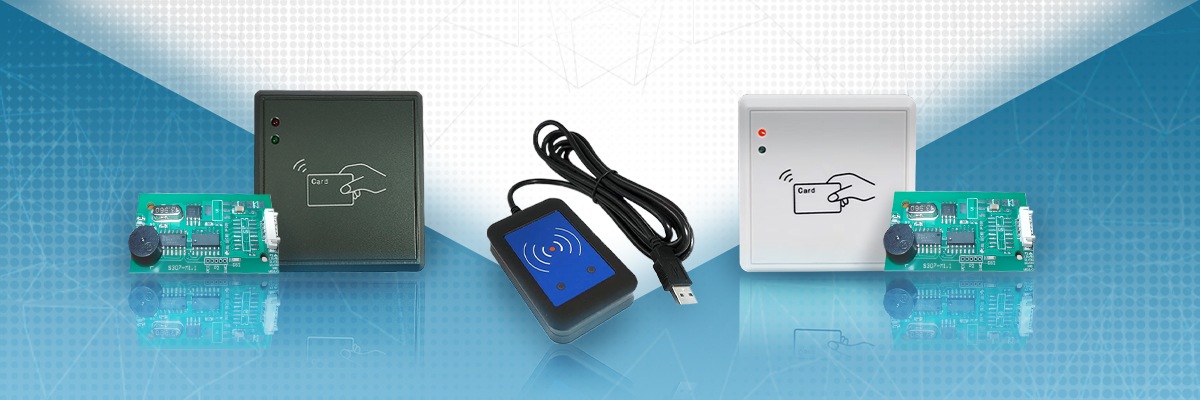Typical Electronic, Mechanical and Software Design of High-Frequency RFID Readers
High-frequency RFID readers are essential devices used to interrogate RFID tags operating at 13.56 MHz. These readers play a vital role in applications such as asset tracking, access control, and payment systems by facilitating the wireless communication between RFID tags and enterprise systems.
Electronic Components
High-frequency RFID readers rely on several critical electronic components:
- RFID Transceiver Module: The transceiver generates and transmits high-frequency electromagnetic signals to activate RFID tags and read their data. This module typically includes oscillators and amplifiers to maintain signal integrity and power.
- Digital Signal Processor (DSP): A DSP processes the incoming data from the RFID tags by filtering noise, demodulating signals, and converting the analog signal to a digital format. This ensures that the reader accurately interprets the tag information.
Mechanical Components
- Antenna Design and Integration: The high-frequency RFID reader often has an integrated or external antenna that transmits and receives the signals to and from RFID tags. The antenna’s design directly influences the reader’s read range, field strength, and overall performance.
- Housing and Enclosure: The reader is typically encased in a durable housing designed to protect internal components from environmental damage, including dust, moisture, and mechanical impact. For industrial applications, enclosures may be ruggedized for harsh conditions.
- Cooling Systems: In high-performance environments, cooling mechanisms such as heat sinks or ventilation may be integrated into the reader design to prevent overheating during extended use.
Software Components
- Firmware and Embedded Software: The embedded software controls the core operations of the RFID reader, such as tag interrogation, data processing, and communication with external devices. Firmware updates allow for ongoing optimization and support for new RFID protocols.
- Configuration and Management Tools: RFID readers often come with software that allows users to configure operating parameters such as output power, modulation settings, and antenna configuration. These tools also provide diagnostics for troubleshooting and system monitoring.
- Middleware Integration: Middleware facilitates the communication between RFID readers and enterprise systems. This software layer ensures the smooth flow of data from the reader to business applications, enabling real-time decision-making.
Working Principles
High-frequency RFID readers operate by emitting a 13.56 MHz electromagnetic field via their antenna. When an RFID tag enters this field, it absorbs the energy to power its internal circuitry and communicates its data back to the reader through modulated signals. The reader’s DSP processes these signals, and the data is sent to connected systems for further analysis.
Connections, Ports, and Interfaces
- Ethernet and Wi-Fi Ports: Many high-frequency RFID readers include Ethernet ports or wireless interfaces (such as Wi-Fi) for network connectivity, allowing real-time data transmission to cloud-based or local systems. This is critical for applications that require continuous monitoring and integration with other enterprise systems.
- Serial Ports (RS232/RS485): Readers may have serial communication interfaces like RS232 or RS485, commonly used for connecting to legacy systems or industrial controllers. These interfaces provide reliable data transfer in environments with high levels of interference.
- USB and GPIO Ports: USB ports are often included for local configuration, firmware updates, or connecting peripheral devices. General-purpose input/output (GPIO) ports enable integration with external sensors or actuators, enhancing system flexibility.
Industry Standards and Regulations
To ensure compliance and safety, high-frequency RFID readers must meet several industry standards and government regulations:
U.S. Regulations:
- FCC Part 15: RFID readers in the United States must adhere to the Federal Communications Commission (FCC) Part 15 regulations, which govern the allowable electromagnetic emissions and signal interference from electronic devices.
- OSHA Requirements: In industrial and workplace settings, RFID reader installation and operation must comply with Occupational Safety and Health Administration (OSHA) standards to prevent electrical hazards and ensure the safety of employees.
Canadian Regulations:
- ISED Regulations: Innovation, Science, and Economic Development (ISED) Canada regulates RFID reader emissions to prevent interference with other radio-based systems. Compliance ensures that the device operates within the legal RF spectrum limits.
- CSA Standards: The Canadian Standards Association (CSA) sets guidelines for the safe design and installation of RFID readers, particularly in industrial and commercial environments.
Quality Assurance and Testing
- Pre-Deployment Testing: RFID readers undergo extensive pre-deployment testing to ensure they meet performance requirements, including reading range, signal strength, and response time. Testing also includes electromagnetic compatibility (EMC) tests to verify that the reader does not interfere with other electronic equipment.
- Environmental and Durability Testing: To ensure long-term reliability, RFID readers are subjected to environmental testing under conditions that simulate real-world use. These tests assess the reader’s ability to withstand high temperatures, humidity, shock, and vibration.
- Firmware and Software Validation: The reader’s firmware is thoroughly tested for bugs, vulnerabilities, and performance issues. Regular updates are provided to maintain compatibility with evolving RFID protocols and security standards.
Our products are in stock and can be shipped overnight to Continental U.S. and Canada from one of our local warehouses. If you have any questions, our technical experts can help you. Please fill out this form or email us.

